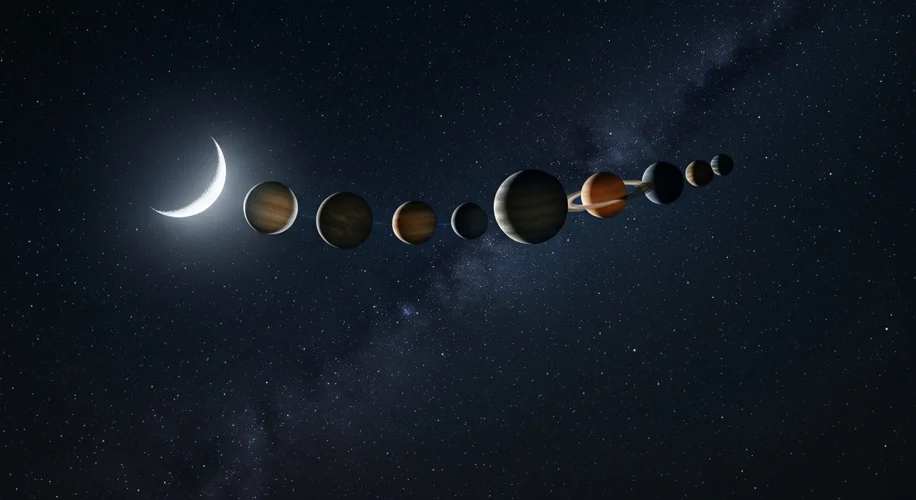Did you know that this Saturday, August 23rd, 2025, offers a truly special celestial show? We’re talking about a six-planet alignment, also known as a planetary parade, happening shortly after a rare ‘Black Moon’ event.
Let’s break down what that means and why it’s so fascinating.
What is a ‘Black Moon’?
While the term ‘Black Moon’ can refer to a few different lunar phenomena, the most common definition, and likely the one relevant here, is the second new moon in a single calendar month. A new moon is when the Moon is between the Earth and the Sun, making it appear dark from our perspective because the Sun’s light isn’t reflecting off its visible surface. Since it’s invisible, it’s called a ‘black’ moon. It’s a reminder that while we often focus on the bright, full moon, the lunar cycle is a continuous journey of light and shadow.
The Grand Alignment: A Six-Planet Parade
Following this ‘black moon,’ we’ll be treated to a stunning display of our solar system’s planetary neighbors. On Saturday, six planets will be visible in the sky at the same time: Mercury, Mars, Jupiter, Saturn, Uranus, and Neptune. This kind of alignment, where multiple planets line up in the sky, is often called a ‘planetary parade.’
Seeing multiple planets together in the sky isn’t extremely rare, but seeing six in a single viewing window is a special occasion. The visibility of these planets depends on several factors, including their orbital positions relative to Earth and the Sun, as well as atmospheric conditions. Mercury, being closest to the Sun, can be tricky to spot, often appearing near the horizon shortly after sunset or before sunrise.
Why is this happening?
Planets orbit the Sun at different speeds and distances. An alignment occurs when their orbits bring them together on the same side of the Sun from our viewpoint on Earth. Think of it like runners on a track – they’re all going around the same central point, but at different paces. Occasionally, a few of them bunch up in a way that makes them visible together from Earth.
How to See the Show
For the best viewing experience, try to find a location away from city lights. This will help minimize light pollution and make fainter objects, like Uranus and Neptune, easier to see if you have binoculars or a telescope. Since Mercury and Mars will be visible in the morning sky before sunrise, an eastern horizon with a clear view will be ideal. Jupiter and Saturn will also be prominent. Uranus and Neptune are much fainter and might require optical aid and very clear conditions.
This celestial event is a wonderful opportunity to connect with the vastness of our solar system and appreciate the predictable, yet always awe-inspiring, dance of the planets. So, mark your calendars for Saturday, August 23rd, 2025, and get ready to look up!

